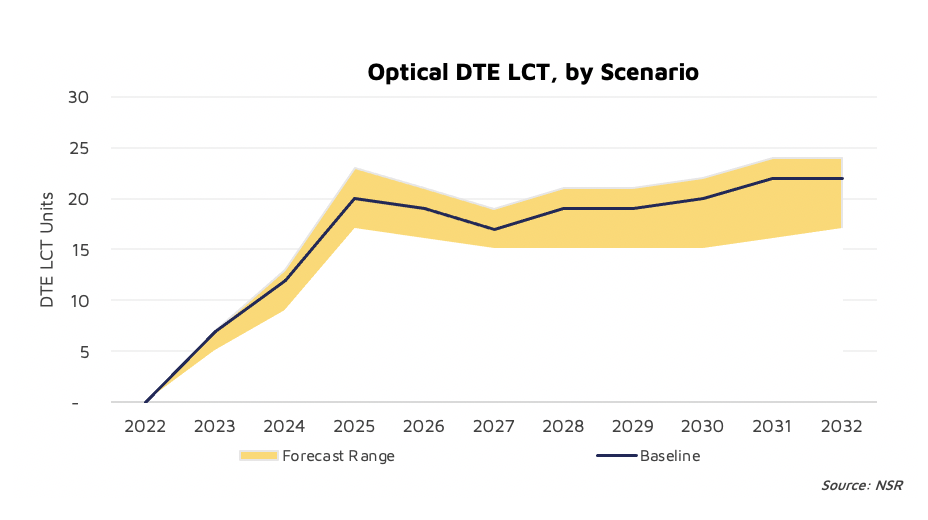Optical Ground Stations: Game Changer or Passing Fad?
Communication is the foundation of success in today’s fast-paced world, where businesses, individuals, and governments require speedy, reliable, and secure connection. Satellite networks have revolutionized connectivity on a global scale, but the demand for faster, more secure, and reliable communication has led to growing interest in and adoption of optical satellite communications. While space-to-space optical communications has been growing, space-to-ground links pose a series of challenges that have stymied progress.
Where do optical ground stations fit in, and will they revolutionize space communications or fall by the wayside like so many other trending technologies?
NSR’s Optical Satellite Communications, 5th Edition report forecasts approx. 170+ Direct-to-Earth (DTE ) laser communications terminals (LCT) to be launched on-board satellites in the next decade, which will require optical ground station (OGS) services. OGS is a critical element of the infrastructure for space-to-ground links, which can facilitate real-time communications for various applications at much higher data rates, up to several Gbps, compared to RF.

Barriers and Roadblocks
The success of OGS depends on its link availability and reliability, which is significantly impacted by atmospheric turbulence. Manufacturers have developed adaptive optics systems that can mitigate the effects of atmospheric turbulence and ensure a reliable and high-speed communication link with satellites. However, this leads to higher CAPEX for ground station operators and directly translates to higher service costs for customers. Other techniques include using accurate weather data forecasts to schedule the downlink or an additional uplink to indicate which portion of the data must be stored onboard for another downlink.
Compliance requirements with eye safety and civil aviation regulations, as well as ground station operator preferences to add OGS to existing ground sites to minimize CAPEX, also impact link availability and reliability. There are solutions such as portable OGS systems developed to address this challenge. However, RF is expected to remain the preferred solution until the link reliability and availability are well-established for optical markets.
Testing and Hybrid is Trending
The majority of current OGS demand is driven mainly by experimental programs seeking higher data rates and alternative solutions as the industry awaits on progress on the challenges mentioned above. Space agencies are conducting initial research studies through contracts and backing ground station operators for initial development of OGS. However, there is a shift towards the adoption of a hybrid architecture over complete optical ones, mainly due to inadequacy of independently-operating optical downlink services for space-ground. Thus, many Non-GEO constellations are expected to continue to utilize RF for downlink in the short and medium term, as there has been increase in data rates for downlink with Ka Band in EO applications. This impacts the attractiveness of optical for commercial satellite operators, except in cases where the downlink rates are significantly higher; i.e., 10s-100s Gbps.
Ground-based communication systems for beyond Earth missions, such as lunar communications, can be cumbersome to install and come at a high cost especially for the large RF antennas needed. As a result, the use of optical seems like a good way out of this bind, and NSR anticipates that ground service providers will increasingly shift towards using Optical Ground Networks (OGNs) for space-ground applications beyond Earth.
The Bottom Line
While OGS technology is still in the development stages and faces multiple technological challenges, early-stage demand for OGS services will be from Gov/Mil players who drive the demand for this market and is increasingly testing it.
In the long term, as the technology matures, demand for OGS services is expected to increase. Whether OGS technology will be a game changer or a passing fad depends entirely on the capability of the OGS value chain players to address the many challenges associated with space-to-ground links.
